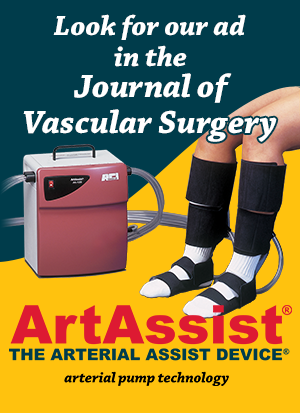Recently, while summarizing key studies for a history and literature review that I’m working on, I was reminded that this particular
study (the abstract is below) also included comparative costs. Update: download the finished History and Literature Review.
In this case, you will see that although SCBD (in other words, the ArtAssist® device) therapy doesn’t seem cheap at first, it’s still less than half the average cost of a primary amputation.
Want to hear even better news? This study yielded an 88% limb salvage rate, even after 18 months.
Edit: A 3-month rental of ArtAssist®…The Arterial Assist Device® in the United States ($1200) is more than 36 times less expensive than the cost of primary amputation per patient, according to the following study. And even if you take the SCBD patient cost (below), it still sounds like a better deal to me.
Nonoperative Active Management of Critical Limb Ischemia: Initial Experience Using a Sequential Compression Biomechanical Device for Limb Salvage
Sherif Sultan; Olubunmi Esan; Anne Fahy
Department of Vascular and Endovascular Surgery, Western Vascular Institute, University College Hospital Galway, Galway, Ireland
Vascular 2008;163:130-139
Critical limb ischemia CLI patients are at high risk of primary amputation. Using a sequential compression biomechanical device SCBD represents a nonoperative option in threatened limbs. We aimed to determine the outcome of using SCBD in amputation-bound nonreconstructable CLI patients regarding limb salvage and 90-day mortality.
Thirty-five patients with 39 critically ischemic limbs rest pain = 12, tissue loss = 27 presented over 24 months. Thirty patients had nonreconstructable arterial outflow vessels, and five were inoperable owing to severe comorbidity scores. All were Rutherford classification 4 or 5 with multilevel disease. All underwent a 12-week treatment protocol and received the best medical treatment.
The mean follow-up was 10 months SD ± 6 months. There were four amputations, with an 18-month cumulative limb salvage rate of 88% standard error [SE] ± 7.62%. Ninety-day mortality was zero. Mean toe pressures increased from 38.2 to 67 mmHg SD ± 33.7, 95% confidence interval [CI] 55 – 79. Popliteal artery flow velocity increased from 45 to 47.9 cm/s 95% CI 35.9 – 59.7. Cumulative survival at 12 months was 81.2% SE ± 11.1 for SCBD, compared with 69.2% in the control group SE ± 12.8% p = .4, hazards ratio = 0.58, 95% CI 0.15 – 2.32. The mean total cost of primary amputation per patient is €29,815 ($44,000) in comparison with €13,900 ($20,515) for SCBD patients.
SCBD enhances limb salvage and reduces length of hospital stay, nonoperatively, in patients with nonreconstructable vessels.






